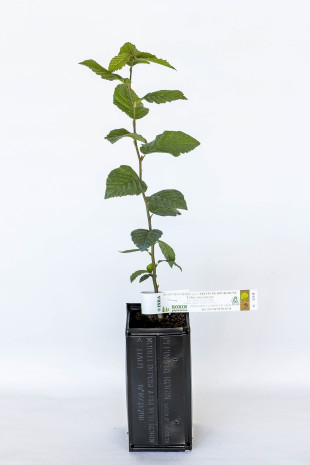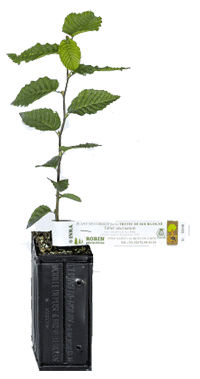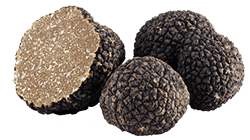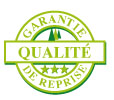


 Young truffle plant of common hornbeam (Carpinus betulus) mycorhized with tuber uncinatum. Common hornbeam intended for the production of Burgundy truffles. Truffle hornbeam plant aged from 1 to 3 years, produced in France with certified quality under INRAE control.
Young truffle plant of common hornbeam (Carpinus betulus) mycorhized with tuber uncinatum. Common hornbeam intended for the production of Burgundy truffles. Truffle hornbeam plant aged from 1 to 3 years, produced in France with certified quality under INRAE control.
Are you planning to start producing Burgundy truffles soon, or more simply to enrich your truffle field with new plants that can enhance your fall truffle harvest? The Common Hornbeam may meet your expectations and prove to be the perfect truffle plant to develop your truffle orchard!
 This common hornbeam truffle plant is obtained after controlled and certified mycorrhization of a common hornbeam tree (Carpinus betulus) with Burgundy truffle spores (Tuber uncinatum). The tree obtained is ready to be planted in your truffle field. It will produce its first truffles within 6 to 7 years.
This common hornbeam truffle plant is obtained after controlled and certified mycorrhization of a common hornbeam tree (Carpinus betulus) with Burgundy truffle spores (Tuber uncinatum). The tree obtained is ready to be planted in your truffle field. It will produce its first truffles within 6 to 7 years.
In order to meet your expectations, our common hornbeam truffle plants, mycorhized with the Burgundy truffle, are available in 4 sizes of cups:
- in anti-chignon® R430 cup of 0.43 liters
- in anti-chignon® R600 cup of 0.6 liters
- in anti-chignon® R1.5L cup of 1.5 liters
- in R3L container (volume of 3 liters)
The common hornbeam (Carpinus betulus) is listed among the many forest host species that can live in symbiosis with the Burgundy truffle. Sometimes called hornbeam, it is a fairly common tree in the forests of Central Europe. This tree has all the qualities required for truffle cultivation: it grows relatively quickly, can withstand repeated and severe pruning, and is adapted to the different types of soil in Western Europe. Although it is very resistant to frosts and heat, it does not grow very high in the mountains (1000 m altitude maximum). Not very exigent on the nature of the soil, it prefers nevertheless the silty and fresh soils benefiting from a sunny or semi-shaded exposure.
 This is likely the most common edible truffle variety in Europe. This autumn truffle is distinguished by its black exterior (peridium). Inside, the flesh is dark brown. And it is distinguished by its very present white veins. The Burgundy truffle is an edible mushroom prized for its delicate flavors. As its vernacular name suggests, the Burgundy truffle was historically found mainly in east-central France. While it has since spread very widely well beyond this region, in France, Burgundy, Champagne, and Lorraine and Alsace remain the regions favored by Tuber uncinatum.
This is likely the most common edible truffle variety in Europe. This autumn truffle is distinguished by its black exterior (peridium). Inside, the flesh is dark brown. And it is distinguished by its very present white veins. The Burgundy truffle is an edible mushroom prized for its delicate flavors. As its vernacular name suggests, the Burgundy truffle was historically found mainly in east-central France. While it has since spread very widely well beyond this region, in France, Burgundy, Champagne, and Lorraine and Alsace remain the regions favored by Tuber uncinatum.
Our truffle hornbeam plants are produced in our laboratories under the control and license of INRAE. These plants are then pampered for many months in our nurseries. Quality plants, carefully selected, it is the guarantee to obtain a good yield after only a few years.
 The plants raised in ROBIN ANTI-CHIGNON® buckets are subject to a guarantee of recovery in the event of failure to recover more than 20% of the plants delivered. Under this guarantee, the seller undertakes to replace free of charge the defective plants during the season following the actual observation by the seller of the defective delivered plants.
The plants raised in ROBIN ANTI-CHIGNON® buckets are subject to a guarantee of recovery in the event of failure to recover more than 20% of the plants delivered. Under this guarantee, the seller undertakes to replace free of charge the defective plants during the season following the actual observation by the seller of the defective delivered plants.